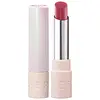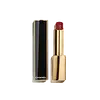What's inside
What's inside
 Key Ingredients
Key Ingredients

 Benefits
Benefits

 Concerns
Concerns

 Ingredients Side-by-side
Ingredients Side-by-side

Bis-Diglyceryl Polyacyladipate-2
EmollientOctyldodecanol
EmollientMethyl Hydrogenated Rosinate
PerfumingHydrogenated Polydecene
EmollientRicinus Communis Seed Oil
MaskingHydrogenated Styrene/Methylstyrene/Indene Copolymer
Polybutene
C12-15 Alkyl Benzoate
AntimicrobialCera Microcristallina
Emulsion StabilisingSynthetic Wax
AbrasiveZea Mays Starch
AbsorbentEthylene/Propylene Copolymer
AbrasiveCalcium Aluminum Borosilicate
Butyrospermum Parkii Butter
Skin ConditioningLimnanthes Alba Seed Oil
Skin ConditioningCI 77891
Cosmetic ColorantStearalkonium Hectorite
Gel FormingAlumina
AbrasiveParfum
MaskingCI 19140
Cosmetic ColorantCI 15850
Cosmetic ColorantCI 77491
Cosmetic ColorantPropylene Carbonate
SolventMangifera Indica Seed Butter
Skin ConditioningHelianthus Annuus Seed Oil
EmollientAmmonium Glycyrrhizate
MaskingCI 42090
Cosmetic ColorantPentaerythrityl Tetra-Di-T-Butyl Hydroxyhydrocinnamate
AntioxidantGlyceryl Stearate Citrate
EmollientTocopherol
AntioxidantAscorbyl Tetraisopalmitate
AntioxidantSqualene
EmollientBeta-Sitosterol
Emulsion StabilisingTin Oxide
AbrasiveBis-Diglyceryl Polyacyladipate-2, Octyldodecanol, Methyl Hydrogenated Rosinate, Hydrogenated Polydecene, Ricinus Communis Seed Oil, Hydrogenated Styrene/Methylstyrene/Indene Copolymer, Polybutene, C12-15 Alkyl Benzoate, Cera Microcristallina, Synthetic Wax, Zea Mays Starch, Ethylene/Propylene Copolymer, Calcium Aluminum Borosilicate, Butyrospermum Parkii Butter, Limnanthes Alba Seed Oil, CI 77891, Stearalkonium Hectorite, Alumina, Parfum, CI 19140, CI 15850, CI 77491, Propylene Carbonate, Mangifera Indica Seed Butter, Helianthus Annuus Seed Oil, Ammonium Glycyrrhizate, CI 42090, Pentaerythrityl Tetra-Di-T-Butyl Hydroxyhydrocinnamate, Glyceryl Stearate Citrate, Tocopherol, Ascorbyl Tetraisopalmitate, Squalene, Beta-Sitosterol, Tin Oxide
Diisostearyl Malate
EmollientHydrogenated Polydecene
EmollientC20-24 Alkyl Dimethicone
Skin ConditioningSynthetic Wax
AbrasiveOctyldodecanol
EmollientPolybutene
Jojoba Esters
EmollientEthylene/Propylene Copolymer
AbrasiveBis-Behenyl/Isostearyl/Phytosteryl Dimer Dilinoleyl Dimer Dilinoleate
EmollientSilica
AbrasiveCellulose
AbsorbentHelianthus Annuus Seed Wax
Skin ConditioningPrunus Mume Flower Extract
Skin ConditioningDisteardimonium Hectorite
StabilisingAluminum Hydroxide
EmollientSqualane
EmollientTocopheryl Acetate
AntioxidantPEG-30 Dipolyhydroxystearate
EmulsifyingPropylene Carbonate
SolventPolyglycerin-3
HumectantAcacia Decurrens Flower Wax
EmollientParfum
MaskingPEG-8
HumectantTocopherol
AntioxidantAscorbyl Palmitate
AntioxidantDimethicone
EmollientAscorbic Acid
AntioxidantCitric Acid
BufferingCI 12085
Cosmetic ColorantCI 15850
Cosmetic ColorantCI 15985
Cosmetic ColorantCI 17200
Cosmetic ColorantCI 19140
Cosmetic ColorantCI 42090
Cosmetic ColorantCI 45380
Cosmetic ColorantCI 45410
Cosmetic ColorantCI 73360
Cosmetic ColorantCI 77163
Cosmetic ColorantCI 77491
Cosmetic ColorantCI 77492
Cosmetic ColorantCI 77499
Cosmetic ColorantCI 77742
Cosmetic ColorantCI 77891
Cosmetic ColorantMica
Cosmetic ColorantDiisostearyl Malate, Hydrogenated Polydecene, C20-24 Alkyl Dimethicone, Synthetic Wax, Octyldodecanol, Polybutene, Jojoba Esters, Ethylene/Propylene Copolymer, Bis-Behenyl/Isostearyl/Phytosteryl Dimer Dilinoleyl Dimer Dilinoleate, Silica, Cellulose, Helianthus Annuus Seed Wax, Prunus Mume Flower Extract, Disteardimonium Hectorite, Aluminum Hydroxide, Squalane, Tocopheryl Acetate, PEG-30 Dipolyhydroxystearate, Propylene Carbonate, Polyglycerin-3, Acacia Decurrens Flower Wax, Parfum, PEG-8, Tocopherol, Ascorbyl Palmitate, Dimethicone, Ascorbic Acid, Citric Acid, CI 12085, CI 15850, CI 15985, CI 17200, CI 19140, CI 42090, CI 45380, CI 45410, CI 73360, CI 77163, CI 77491, CI 77492, CI 77499, CI 77742, CI 77891, Mica
Ingredients Explained
These ingredients are found in both products.
Ingredients higher up in an ingredient list are typically present in a larger amount.
Ci 15850 is the pigment color red. It is an azo dye and created synthetically.
Azo dyes need to be thoroughly purified before use. This allows them to be more stable and longer-lasting.
This ingredient is common in foundations, lipsticks, and blushes. This color is described as brown/orangey red.
It has many secondary names such as Red 6 and Red 7. According to a manufacturer, Red 6 usually contains aluminum.
Learn more about CI 15850CI 19140 is also known as Tartrazine. Tartrazine is a synthetic dye used in cosmetics, foods, and medicine to add a yellow color.
Tartrazine is created from petroleum and is water-soluble.
Some people may experience allergies from this dye, especially asthmatics and those with an aspirin intolerance.
Learn more about CI 19140Ci 42090 is a synthetic dye created from petroleum. It is used to give a bright blue color to cosmetics, medicine, and food.
Ci 77491 is also hydrated iron III oxide. It's sole purpose is to give a red/pink hue to products.
Iron III oxides are classified as inorganic chemicals for coloring.
Synthetically created Ci 77491 is considered safer than those naturally found. This is because the synthetically created version may contain less impurities. Iron oxides are generally non-toxic and non-allergenic.
Learn more about CI 77491Ci 77891 is a white pigment from Titanium dioxide. It is naturally found in minerals such as rutile and ilmenite.
It's main function is to add a white color to cosmetics. It can also be mixed with other colors to create different shades.
Ci 77891 is commonly found in sunscreens due to its ability to block UV rays.
Learn more about CI 77891Ethylene/Propylene Copolymer is an exfoliant.
Hydrogenated Polydecene is an emollient. It creates a non-occlusive film on the skin that offers extra protection for your skin barrier.
The texture of Hydrogenated Polydecene ranges from light and silky to rich.
Hydrogenated Polydecene is the end compound of controlled hydrogenation of Polydecene.
Learn more about Hydrogenated PolydeceneOctyldodecanol is a fatty alcohol. It is primarily used to enhance the texture of products.
As an emulsifier, Octyldodecanol helps prevent the oils and waters from separating. It also prevents ingredients from creating foam when shaken.
Octyldodecanol is created by reducing fatty acid to an alcohol.
Due to its high molecular weight, it does not get absorbed into the skin.
Learn more about OctyldodecanolParfum is a catch-all term for an ingredient or more that is used to give a scent to products.
Also called "fragrance", this ingredient can be a blend of hundreds of chemicals or plant oils. This means every product with "fragrance" or "parfum" in the ingredients list is a different mixture.
For instance, Habanolide is a proprietary trade name for a specific aroma chemical. When used as a fragrance ingredient in cosmetics, most aroma chemicals fall under the broad labeling category of “FRAGRANCE” or “PARFUM” according to EU and US regulations.
The term 'parfum' or 'fragrance' is not regulated in many countries. In many cases, it is up to the brand to define this term.
For instance, many brands choose to label themselves as "fragrance-free" because they are not using synthetic fragrances. However, their products may still contain ingredients such as essential oils that are considered a fragrance by INCI standards.
One example is Calendula flower extract. Calendula is an essential oil that still imparts a scent or 'fragrance'.
Depending on the blend, the ingredients in the mixture can cause allergies and sensitivities on the skin. Some ingredients that are known EU allergens include linalool and citronellol.
Parfum can also be used to mask or cover an unpleasant scent.
The bottom line is: not all fragrances/parfum/ingredients are created equally. If you are worried about fragrances, we recommend taking a closer look at an ingredient. And of course, we always recommend speaking with a professional.
Learn more about ParfumPolybutene is used to help control the viscosity of a product. This just means it helps adjusts the texture.
It is a polymer and does not get absorbed into the skin due to its large size.
Studies found this ingredient did not irritate skin in concentrations below 15%.
Learn more about PolybuteneThis ingredient is a solvent. It helps dissolve active ingredients and alter the texture of products.
Propylene Carbonate is commonly used in makeup and with clay, such as montmorillonite or bentonite.
Studies show this ingredient to be safe for cosmetics. When it is undiluted, it can cause skin irritation. (It is always diluted in skincare and makeup). This ingredient is water-soluble.
Propylene Carbonate is created from propylene glycol and carbonic acid.
Learn more about Propylene CarbonateSynthetic Wax is created from fossil fuels such as natural gas. It is used to enhance texture, adjust pH, and as an occlusive.
It may also be used as an abrasive ingredient to exfoliate the skin.
Synthetic Wax may not be fungal acne safe.
Learn more about Synthetic WaxTocopherol (also known as Vitamin E) is a common antioxidant used to help protect the skin from free-radicals and strengthen the skin barrier. It's also fat soluble - this means our skin is great at absorbing it.
Vitamin E also helps keep your natural skin lipids healthy. Your lipid skin barrier naturally consists of lipids, ceramides, and fatty acids. Vitamin E offers extra protection for your skin’s lipid barrier, keeping your skin healthy and nourished.
Another benefit is a bit of UV protection. Vitamin E helps reduce the damage caused by UVB rays. (It should not replace your sunscreen). Combining it with Vitamin C can decrease sunburned cells and hyperpigmentation after UV exposure.
You might have noticed Vitamin E + C often paired together. This is because it is great at stabilizing Vitamin C. Using the two together helps increase the effectiveness of both ingredients.
There are often claims that Vitamin E can reduce/prevent scarring, but these claims haven't been confirmed by scientific research.
Learn more about Tocopherol